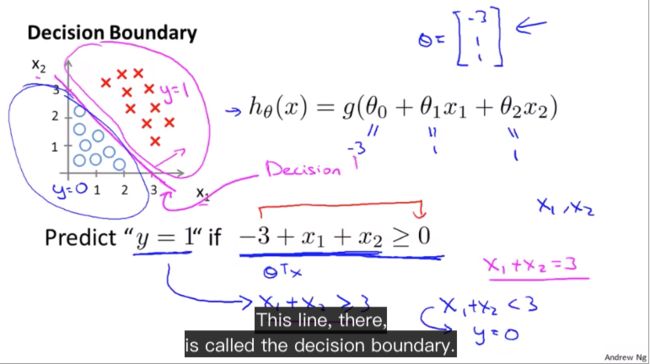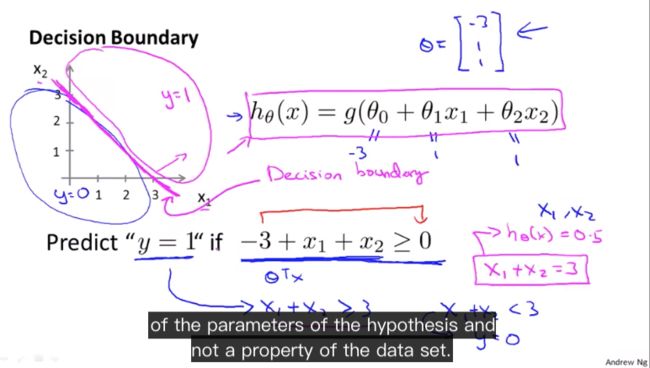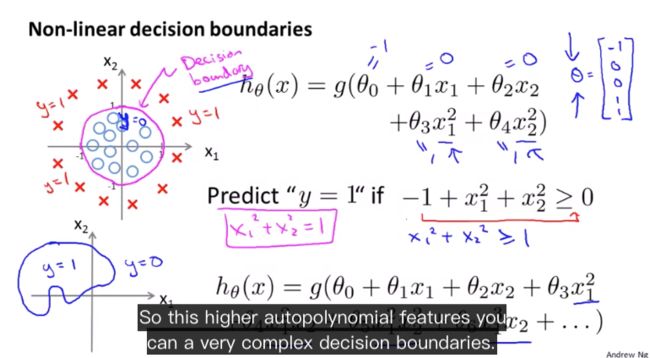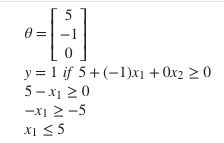- 【SpringMVC】常用注解:@RequestBody
字节源流
java开发语言
1.作用用于获取请求实体内容,直接使用得到的是key=value&key=value的数据。获取请求实体内容不适用get请求。2.属性required描述是否有请求体,默认值为true。当取值为true时,get请求方式会报错。如果取值为false,get请求得到的是null。3.示例先编写jsp代码用户名称:用户密码:用户年龄:然后编写控制器代码@RequestMapping("useReque
- 六十天前端强化训练之第十七天React Hooks 入门:useState 深度解析
编程星辰海
#前端前端react.jsjavascript
=====欢迎来到编程星辰海的博客讲解======看完可以给一个免费的三连吗,谢谢大佬!目录一、知识讲解1.Hooks是什么?2.useState的作用3.基本语法解析4.工作原理5.参数详解a)初始值设置方式b)更新函数特性6.注意事项7.类组件对比8.常见问题解答二、核心代码示例三、实现效果四、学习要点总结五、扩展阅读推荐官方文档优质文章推荐学习路径进阶资源六、实践步骤一、表单输入控制二、动态
- 机器学习中的梯度到底是什么?(chat-gpt问答)
湫怿
机器学习gpt人工智能梯度
1、梯度是对损失函数求导吗?是的,梯度是对损失函数(或目标函数)求导数值化后的结果。梯度告诉我们目标函数在某个点上的方向性和变化率,这些信息是优化算法推进参数评估和更新的重要指标。在机器学习中,我们通过不断调整参数,使目标函数达到最小值,从而实现模型的训练和学习。2、为什么梯度要求偏导来求解?梯度是一个向量,它的方向指向函数值增加最快的方向,其大小表示函数值的变化率。为了确定梯度的方向和大小,需要
- Spring Boot与Django对比:哪个更适合做为Web服务器框架?
m0_74824076
面试学习路线阿里巴巴springbootdjango前端
文章目录1.基础背景与技术栈1.1SpringBoot1.2Django2.架构对比2.1SpringBoot架构2.2Django架构3.性能比较3.1SpringBoot性能3.2Django性能4.开发效率4.1SpringBoot开发效率4.2Django开发效率5.社区与生态系统5.1SpringBoot社区5.2Django社区6.部署与运维6.1SpringBoot部署与运维6.2D
- 机器学习中的梯度下降是什么意思?
yuanpan
机器学习人工智能
梯度下降(GradientDescent)是机器学习中一种常用的优化算法,用于最小化损失函数(LossFunction)。通过迭代调整模型参数,梯度下降帮助模型逐步逼近最优解,从而提升模型的性能。1.核心思想梯度下降的核心思想是利用损失函数的梯度(即导数)来指导参数的更新方向。具体来说:梯度:梯度是损失函数对模型参数的偏导数,表示损失函数在当前参数点上的变化率。下降:通过沿着梯度的反方向(即损失函
- 浅谈Linux中的Shell及其原理
有梦想的电信狗
linux服务器sshunix开发语言c语言c++
浅谈Linux中的Shell及其原理Linux中Shell的运行原理github地址前言一、Linux内核与Shell的关系1.1操作系统核心1.2用户与内核的隔离二、Shell的演进与核心机制2.1发展历程2.2核心功能解析2.3shell的工作流程1.用户输入命令2.解析器拆分指令3.扩展器处理动态内容变量替换通配符扩展命令替换4.执行器运行命令5.内核处理系统调用6.返回结果关键组件协作三、
- CIR-DFENet:结合跨模态图像表示和双流特征增强网络进行活动识别
是Dream呀
神经网络计算机视觉人工智能神经网络深度学习
前言:零基础学Python:Python从0到100最新最全教程。想做这件事情很久了,这次我更新了自己所写过的所有博客,汇集成了Python从0到100,共一百节课,帮助大家一个月时间里从零基础到学习Python基础语法、Python爬虫、Web开发、计算机视觉、机器学习、神经网络以及人工智能相关知识,成为学业升学和求职工作的先行者!【优惠信息】•新专栏订阅前200名享9.9元优惠•订阅量破200
- 在Vue自定义事件中,父组件如何接收子组件传递的多个参数
北辰alk
vuevue.jsjavascript前端
在Vue.js中,组件之间的通信是一个非常重要的概念。Vue提供了多种方式来实现组件之间的通信,其中自定义事件是一种非常常见的方式。通过自定义事件,子组件可以向父组件传递数据。本文将详细介绍如何在Vue中通过自定义事件实现父组件接收子组件传递的多个参数,并提供详细的代码示例和流程图。文章目录1.Vue组件通信概述2.自定义事件的基本用法2.1子组件触发自定义事件2.2父组件监听自定义事件3.传递多
- 动态路由RIP的总结
nihuhui666
网络智能路由器RIP
动态路由所有路由器运行相同的路由协议,之后通过路由器之间的沟通,协商计算到达未知网段的路由信息静态路由优点:1.选路由管理员选择,更好掌控2.路由器资源占用更少3.静态路由相对动态路由更加安全缺点:1.配置量大2.静态路由无法根据网络拓扑结构的变化而变化—收敛动态路由:缺点:1.通过单一算法计算出来的路径,可能出现选路不佳2.资源占用多3.没有静态路由安全优点:1.配置量少2.动态路由可以根据网络
- OSPF总结
nihuhui666
网络ospf网络协议
OSPF–开放式最短路径优先协议1.选路–应为ospf是链路状态协议,收集拓扑信息之后将图形结构通过SPF算法转化为树形结构,计算出的路径不会有环路,并且以带宽作为开销的评判标准,所以OSPF选路优于rip2.收敛–因为OSPF的计数器短与rip,所以收敛快3.占用资源–从单一数据包角度来说,因为rip传递的是路由信息,所以资源占用不大而ospf传递拓扑信息,从单个数据包角度说,大于rip.但是o
- 机器学习-----决策树
多巴胺与内啡肽.
机器学习机器学习决策树人工智能
文章目录1、概念2.决策树的构建过程2.1特征选择2.2树的生成2.3树的剪枝3.决策树的优缺点4.决策树的应用4.1分类任务4.2回归任务4.3集成学习代码示例总结1、概念1.1决策树是什么决策树是通过对样本的训练,建立出分类规则,并对新样本进行预测,属于有监督学习。根节点:最上面的节点。叶子节点:能直接看到结果的节点。非叶子节点:位于中间的节点。1.2决策树的类型分类树:用于分类任务,叶节点代
- C++深入浅出(六)—— 模板初阶
Albert Edison
深入C++世界c++开发语言类模板函数模板
文章目录1.泛型编程2.函数模板概念格式原理实例化隐式实例化显示实例化模板参数的匹配原则原则一原则二原则三3.类模板格式类模板的实例化1.泛型编程还记得在C语言中,如何实现交换两个对象的函数嘛?代码示例//交换两个整型变量voidSwap1(int*p1,int*p2){inttmp=*p1;
- 机器学习驱动的智能化电池管理技术与应用
萌萌可爱郭德纲
机器学习人工智能
电池管理技术概述电池的工作原理与关键性能指标电池管理系统的核心功能ØSOC估计ØSOH估计Ø寿命预测Ø故障诊断人工智能机器学习基础人工智能的发展机器学习的关键概念机器学习在电池管理中的应用案例介绍人工智能在电池荷电状态估计中的应用荷电状态估计方法概述基于迁移学习的SOC估计(1)基于迁移学习的SOC估计方法数据集、估计框架、估计结果(2)全生命周期下的SOC估计方法数据集、估计框架、估计结果基于数
- 机器学习_重要知识点整理
嘉羽很烦
机器学习机器学习
机器学习重要知识点整理一、数学与理论基础1.概率与统计术语作用使用场景概率分布描述随机变量的取值概率,如正态分布、二项分布。数据建模(如高斯分布假设)、生成模型(如贝叶斯网络)。贝叶斯定理计算条件概率,更新先验知识以获得后验概率。贝叶斯分类器、文本分类(如垃圾邮件检测)。最大似然估计(MLE)通过数据最大化似然函数,估计模型参数。线性回归、逻辑回归参数估计。假设检验判断假设是否成立(如t检验、卡方
- 我与DeepSeek读《大型网站技术架构》- 大型网站架构技术一览与Web开发技术发展历程
诺亚凹凸曼
架构
文章目录大型网站架构技术一览1.前端架构2.应用层架构3.服务层架构4.存储层架构5.后台架构6.数据采集与监控7.安全架构8.数据中心机房架构Web开发技术发展历程一、静态HTML阶段二、CGI脚本模式阶段三、服务器页面模式阶段大型网站架构技术一览1.前端架构浏览器访问优化:压缩静态资源、减少HTTP请求。CDN加速:将静态资源分发至边缘节点,降低网络延迟。反向代理:缓存热点内容,提供负载均衡与
- ROS2基础——Linux
A_lvvx
ROS2linuxROS2
Ctrl+Alt+T:打开一个新终端1.查看终端目录命令$pwd#查看终端当前目录---/home/lvvx2.切换终端目录到根目录$cd/#从当前进入根目录$pwd---/3.查看当前目录下文件$ls#查看当前目录下文件---bindevhomeliblib64lost+foundmntprocrunsnapsysusrbootectinitlib32libx32mediaoptrootsbin
- 图解AUTOSAR_CP_ComM
KaiGer666
图解AUTOSAR_CP嵌入式硬件单片机汽车
AUTOSARComM模块详解AUTOSAR通信管理模块详细解析目录1.概述1.1.ComM模块的作用1.2.ComM模块的位置2.架构设计2.1.模块上下文视图2.2.内部组件结构3.状态机3.1.通道状态机3.2.PNC状态机4.配置模型4.1.配置结构4.2.用户-PNC-通道映射5.服务接口5.1.API概述5.2.主要功能6.通信序列<
- C++(八)vector
cloud_disspated
c++开发语言
vector的介绍1.vector是表示可变大小数组的序列容器2.就像数组一样,vector也采用的连续存储空间来存储元素也就是意味着可以采用下标对vector的元素进行访问,和数组一样高效但是又不像数组,它的大小是可以动态改变的,而且它的大小会被容器自动处理3.本质讲,vector使用动态分配数组来存储它的元素当新元素插入时候,这个数组需要被重新分配大小为了增加存储空间其做法是,分配一个新的数组
- 用Python打造智能家居安防系统,让科技守护你的家
Echo_Wish
Python笔记Python算法python智能家居科技
友友们好!我是Echo_Wish,我的的新专栏《Python进阶》以及《Python!实战!》正式启动啦!这是专为那些渴望提升Python技能的朋友们量身打造的专栏,无论你是已经有一定基础的开发者,还是希望深入挖掘Python潜力的爱好者,这里都将是你不可错过的宝藏。在这个专栏中,你将会找到:●深入解析:每一篇文章都将深入剖析Python的高级概念和应用,包括但不限于数据分析、机器学习、Web开发
- 增量预训练和微调的区别
做个天秤座的程序猿
大模型原理webkit
文章目录前言一、增量预训练和微调的区别二、代码示例1.增量预训练示例2.微调示例3.代码的区别三、数据格式1.增量预训练2.微调3.示例4.小结四、数据量要求1.指导原则2.示例3.实际操作中的考虑4.小结前言增量预训练是一种在现有预训练模型的基础上,通过引入新的数据或任务来进一步训练模型的方法。这种方法的主要目的是在不从头开始训练模型的情况下,利用新数据或特定领域的数据增强模型的能力和性能。增量
- Java对比Python,谁才是编程王者?
Java学研大本营
pythonjava开发语言
Python和Java是目前编程最受欢迎的两种语言,本文从多角度比较二者的相同点和差异,帮助你更深入地了解两种语言的特点,最终能根据你自身的需求来进行选择。微信搜索关注《Java学研大本营》Python和Java是当今世界上最流行的两种编程语言。两者都被广泛用于各种行业和应用,从网络开发到机器学习再到数据分析。但是这两种语言哪个更好呢?在这本中,我们将多方面比较Python和Java,探索二者的历
- HarmonyNext深度解析:ArkUI高效渲染与性能优化实战
披光人
harmonyOSubuntulinux运维
一、HarmonyNext渲染引擎技术演进(约1200字技术解析)HarmonyOSNext在UI渲染架构层面实现了重大突破,其创新的ArkUI渲染引擎采用分层异步架构设计。核心改进包括:原子化渲染管线采用基于Vulkan的跨平台渲染后端,通过原子化渲染指令拆分技术,实现绘制指令的并行执行能力。在华为Mate60系列实测中,复杂界面渲染延迟降低42%智能脏区检测机制基于机器学习的区域更新预测算法,
- Python多版本环境管理UV
坐吃山猪
Pythonpythonuv开发语言
Python多版本环境管理UV1-参考网址Python虚拟环境UV管理工具-官网Python虚拟环境UV管理工具-快速开始pyproject.toml使用指导2-核心知识点1)python项目维护requirements.txt2)python机器学习环境Anaconda3)python轻量级环境管理uv4)uvx快速上手使用3-上手实操1-安装UV虚拟环境管理工具UV官网安装教程#Windows
- 【颠覆认知】大模型开发终极实战:30分钟用LangChain打造「超级AI客服」系统(附全代码+黑科技调参技巧)
煜bart
人工智能
重磅提示:文末含99%开发者不知道的Prompt逆向注入破解方案!---###一、撕开大模型开发的遮羞布:传统方案的三大致命陷阱传统AI客服系统开发面临:1.对话记忆金鱼症(7轮对话必失忆)2.知识库更新堪比器官移植3.业务逻辑与AI模型强耦合我们
- 数据架构与机器学习:如何构建智能系统
AI天才研究院
AI大模型应用入门实战与进阶大数据人工智能语言模型AILLMJavaPython架构设计AgentRPA
1.背景介绍机器学习(MachineLearning)是一种使计算机程序在未被明确编程的情况下,通过经验的学习自动改善其行为的技术。机器学习的目标是使计算机能够自主地从数据中学习,以便在未来的问题中做出更好的决策。数据架构(DataArchitecture)是一种用于有效管理、存储和处理数据的系统结构和组件。数据架构涉及到数据的收集、存储、处理和分析,以及数据的存储和传输。数据架构是构建智能系统的
- QLineEdit控件:基础用法、样式表与扩展应用
Quz
掌握Qt控件:从入门到精通qt
目录前言1.基础用法1.1创建QLineEdit1.2常用属性设置2.样式表美化2.1基础样式2.2动态效果2.3自定义图标3.信号与槽3.1常用信号3.2实时输入处理4.高级功能4.1输入验证4.2自动补全参考前言QLineEdit是Qt中最常用的输入控件之一,广泛应用于表单输入、搜索框等场景。本文将全面解析QLineEdit的使用方法,涵盖以下内容:基础用法:文本输入、占位符、输入限制样式表美
- 超详细的Numpy基础教程!!!
不会爬虫的闲鱼
numpy数据分析python
Numpy是一个开源的Python库,用于支持大型多维数组和矩阵运算,同时提供了大量的数学函数库。它是科学计算中非常重要的工具。Numpy在数据科学中非常重要,因为它提供了高效的数组处理能力和广泛的数学函数库,这对于处理大规模数据集、进行科学计算和机器学习等任务至关重要。一、安装与设置如何安装Numpypipinstallnumpy验证安装的方法importnumpyprint(numpy.__v
- 使用flask快速搭建web应用
alex190824
flask前端pythonecharts
文章目录前言一、Flask是什么?二、使用步骤1.引入包2.简单的服务端应用程序3.添加用于显示折线图代码4.在templates目录下,创建用于渲染的line-simple.html页面5.完整的代码结构前端代码后端代码总结前言在数据处理分析过程中,有快速搭建数据展示的应用场景需求,此时可以使用Flask快速进行web应用环境构建。本示例演示创建web应用及显示渲染echart折线图。一、Fla
- 438. 找到字符串中所有字母异位词
Zannnne
leetcode
438.找到字符串中所有字母异位词题号:力扣438知识点:字符串,滚动窗口目标完成度:59/150总结题干:思路:1.如果s的长度小于p,则s中必然找不到与p是异位词的子串。2.异位词的特点是每个字母出现的次数一直,但是出现的顺序不一定相同。因此我们建立两个容器,来记录p中和滚动窗口中每个字母出现的次数,由于字母一共只有26个,所以容易大小为26。3.第一个for循环相当于是对scount进行初始
- SQLite学习(十一)使用JDBC读写SQLite数据,基于Java实现
Designer 小郑
SQLite从入门到实战sqlite数据库sqljavajdbc
1.前言2.基础工作2.1创建Java项目2.2依赖Jar包3.连接SQLite4.查询SQLite数据5.新增SQLite数据6.总结1.前言在上一篇《SQLite学习(十)SQLite的注入问题的防范、数据库文件导入和导出》中,讲解了SQLite的SQL注入问题和应对措施,在本篇博客中,将继续讲解如何使用JDBC读写SQLite数据。同学们将学习到:JDBC是什么使用JDBC读写SQLite请
- Spring4.1新特性——Spring MVC增强
jinnianshilongnian
spring 4.1
目录
Spring4.1新特性——综述
Spring4.1新特性——Spring核心部分及其他
Spring4.1新特性——Spring缓存框架增强
Spring4.1新特性——异步调用和事件机制的异常处理
Spring4.1新特性——数据库集成测试脚本初始化
Spring4.1新特性——Spring MVC增强
Spring4.1新特性——页面自动化测试框架Spring MVC T
- mysql 性能查询优化
annan211
javasql优化mysql应用服务器
1 时间到底花在哪了?
mysql在执行查询的时候需要执行一系列的子任务,这些子任务包含了整个查询周期最重要的阶段,这其中包含了大量为了
检索数据列到存储引擎的调用以及调用后的数据处理,包括排序、分组等。在完成这些任务的时候,查询需要在不同的地方
花费时间,包括网络、cpu计算、生成统计信息和执行计划、锁等待等。尤其是向底层存储引擎检索数据的调用操作。这些调用需要在内存操
- windows系统配置
cherishLC
windows
删除Hiberfil.sys :使用命令powercfg -h off 关闭休眠功能即可:
http://jingyan.baidu.com/article/f3ad7d0fc0992e09c2345b51.html
类似的还有pagefile.sys
msconfig 配置启动项
shutdown 定时关机
ipconfig 查看网络配置
ipconfig /flushdns
- 人体的排毒时间
Array_06
工作
========================
|| 人体的排毒时间是什么时候?||
========================
转载于:
http://zhidao.baidu.com/link?url=ibaGlicVslAQhVdWWVevU4TMjhiKaNBWCpZ1NS6igCQ78EkNJZFsEjCjl3T5EdXU9SaPg04bh8MbY1bR
- ZooKeeper
cugfy
zookeeper
Zookeeper是一个高性能,分布式的,开源分布式应用协调服务。它提供了简单原始的功能,分布式应用可以基于它实现更高级的服务,比如同步, 配置管理,集群管理,名空间。它被设计为易于编程,使用文件系统目录树作为数据模型。服务端跑在java上,提供java和C的客户端API。 Zookeeper是Google的Chubby一个开源的实现,是高有效和可靠的协同工作系统,Zookeeper能够用来lea
- 网络爬虫的乱码处理
随意而生
爬虫网络
下边简单总结下关于网络爬虫的乱码处理。注意,这里不仅是中文乱码,还包括一些如日文、韩文 、俄文、藏文之类的乱码处理,因为他们的解决方式 是一致的,故在此统一说明。 网络爬虫,有两种选择,一是选择nutch、hetriex,二是自写爬虫,两者在处理乱码时,原理是一致的,但前者处理乱码时,要看懂源码后进行修改才可以,所以要废劲一些;而后者更自由方便,可以在编码处理
- Xcode常用快捷键
张亚雄
xcode
一、总结的常用命令:
隐藏xcode command+h
退出xcode command+q
关闭窗口 command+w
关闭所有窗口 command+option+w
关闭当前
- mongoDB索引操作
adminjun
mongodb索引
一、索引基础: MongoDB的索引几乎与传统的关系型数据库一模一样,这其中也包括一些基本的优化技巧。下面是创建索引的命令: > db.test.ensureIndex({"username":1}) 可以通过下面的名称查看索引是否已经成功建立: &nbs
- 成都软件园实习那些话
aijuans
成都 软件园 实习
无聊之中,翻了一下日志,发现上一篇经历是很久以前的事了,悔过~~
断断续续离开了学校快一年了,习惯了那里一天天的幼稚、成长的环境,到这里有点与世隔绝的感觉。不过还好,那是刚到这里时的想法,现在感觉在这挺好,不管怎么样,最要感谢的还是老师能给这么好的一次催化成长的机会,在这里确实看到了好多好多能想到或想不到的东西。
都说在外面和学校相比最明显的差距就是与人相处比较困难,因为在外面每个人都
- Linux下FTP服务器安装及配置
ayaoxinchao
linuxFTP服务器vsftp
检测是否安装了FTP
[root@localhost ~]# rpm -q vsftpd
如果未安装:package vsftpd is not installed 安装了则显示:vsftpd-2.0.5-28.el5累死的版本信息
安装FTP
运行yum install vsftpd命令,如[root@localhost ~]# yum install vsf
- 使用mongo-java-driver获取文档id和查找文档
BigBird2012
driver
注:本文所有代码都使用的mongo-java-driver实现。
在MongoDB中,一个集合(collection)在概念上就类似我们SQL数据库中的表(Table),这个集合包含了一系列文档(document)。一个DBObject对象表示我们想添加到集合(collection)中的一个文档(document),MongoDB会自动为我们创建的每个文档添加一个id,这个id在
- JSONObject以及json串
bijian1013
jsonJSONObject
一.JAR包简介
要使程序可以运行必须引入JSON-lib包,JSON-lib包同时依赖于以下的JAR包:
1.commons-lang-2.0.jar
2.commons-beanutils-1.7.0.jar
3.commons-collections-3.1.jar
&n
- [Zookeeper学习笔记之三]Zookeeper实例创建和会话建立的异步特性
bit1129
zookeeper
为了说明问题,看个简单的代码,
import org.apache.zookeeper.*;
import java.io.IOException;
import java.util.concurrent.CountDownLatch;
import java.util.concurrent.ThreadLocal
- 【Scala十二】Scala核心六:Trait
bit1129
scala
Traits are a fundamental unit of code reuse in Scala. A trait encapsulates method and field definitions, which can then be reused by mixing them into classes. Unlike class inheritance, in which each c
- weblogic version 10.3破解
ronin47
weblogic
版本:WebLogic Server 10.3
说明:%DOMAIN_HOME%:指WebLogic Server 域(Domain)目录
例如我的做测试的域的根目录 DOMAIN_HOME=D:/Weblogic/Middleware/user_projects/domains/base_domain
1.为了保证操作安全,备份%DOMAIN_HOME%/security/Defa
- 求第n个斐波那契数
BrokenDreams
今天看到群友发的一个问题:写一个小程序打印第n个斐波那契数。
自己试了下,搞了好久。。。基础要加强了。
&nbs
- 读《研磨设计模式》-代码笔记-访问者模式-Visitor
bylijinnan
java设计模式
声明: 本文只为方便我个人查阅和理解,详细的分析以及源代码请移步 原作者的博客http://chjavach.iteye.com/
import java.util.ArrayList;
import java.util.List;
interface IVisitor {
//第二次分派,Visitor调用Element
void visitConcret
- MatConvNet的excise 3改为网络配置文件形式
cherishLC
matlab
MatConvNet为vlFeat作者写的matlab下的卷积神经网络工具包,可以使用GPU。
主页:
http://www.vlfeat.org/matconvnet/
教程:
http://www.robots.ox.ac.uk/~vgg/practicals/cnn/index.html
注意:需要下载新版的MatConvNet替换掉教程中工具包中的matconvnet:
http
- ZK Timeout再讨论
chenchao051
zookeepertimeouthbase
http://crazyjvm.iteye.com/blog/1693757 文中提到相关超时问题,但是又出现了一个问题,我把min和max都设置成了180000,但是仍然出现了以下的异常信息:
Client session timed out, have not heard from server in 154339ms for sessionid 0x13a3f7732340003
- CASE WHEN 用法介绍
daizj
sqlgroup bycase when
CASE WHEN 用法介绍
1. CASE WHEN 表达式有两种形式
--简单Case函数
CASE sex
WHEN '1' THEN '男'
WHEN '2' THEN '女'
ELSE '其他' END
--Case搜索函数
CASE
WHEN sex = '1' THEN
- PHP技巧汇总:提高PHP性能的53个技巧
dcj3sjt126com
PHP
PHP技巧汇总:提高PHP性能的53个技巧 用单引号代替双引号来包含字符串,这样做会更快一些。因为PHP会在双引号包围的字符串中搜寻变量, 单引号则不会,注意:只有echo能这么做,它是一种可以把多个字符串当作参数的函数译注: PHP手册中说echo是语言结构,不是真正的函数,故把函数加上了双引号)。 1、如果能将类的方法定义成static,就尽量定义成static,它的速度会提升将近4倍
- Yii框架中CGridView的使用方法以及详细示例
dcj3sjt126com
yii
CGridView显示一个数据项的列表中的一个表。
表中的每一行代表一个数据项的数据,和一个列通常代表一个属性的物品(一些列可能对应于复杂的表达式的属性或静态文本)。 CGridView既支持排序和分页的数据项。排序和分页可以在AJAX模式或正常的页面请求。使用CGridView的一个好处是,当用户浏览器禁用JavaScript,排序和分页自动退化普通页面请求和仍然正常运行。
实例代码如下:
- Maven项目打包成可执行Jar文件
dyy_gusi
assembly
Maven项目打包成可执行Jar文件
在使用Maven完成项目以后,如果是需要打包成可执行的Jar文件,我们通过eclipse的导出很麻烦,还得指定入口文件的位置,还得说明依赖的jar包,既然都使用Maven了,很重要的一个目的就是让这些繁琐的操作简单。我们可以通过插件完成这项工作,使用assembly插件。具体使用方式如下:
1、在项目中加入插件的依赖:
<plugin>
- php常见错误
geeksun
PHP
1. kevent() reported that connect() failed (61: Connection refused) while connecting to upstream, client: 127.0.0.1, server: localhost, request: "GET / HTTP/1.1", upstream: "fastc
- 修改linux的用户名
hongtoushizi
linuxchange password
Change Linux Username
更改Linux用户名,需要修改4个系统的文件:
/etc/passwd
/etc/shadow
/etc/group
/etc/gshadow
古老/传统的方法是使用vi去直接修改,但是这有安全隐患(具体可自己搜一下),所以后来改成使用这些命令去代替:
vipw
vipw -s
vigr
vigr -s
具体的操作顺
- 第五章 常用Lua开发库1-redis、mysql、http客户端
jinnianshilongnian
nginxlua
对于开发来说需要有好的生态开发库来辅助我们快速开发,而Lua中也有大多数我们需要的第三方开发库如Redis、Memcached、Mysql、Http客户端、JSON、模板引擎等。
一些常见的Lua库可以在github上搜索,https://github.com/search?utf8=%E2%9C%93&q=lua+resty。
Redis客户端
lua-resty-r
- zkClient 监控机制实现
liyonghui160com
zkClient 监控机制实现
直接使用zk的api实现业务功能比较繁琐。因为要处理session loss,session expire等异常,在发生这些异常后进行重连。又因为ZK的watcher是一次性的,如果要基于wather实现发布/订阅模式,还要自己包装一下,将一次性订阅包装成持久订阅。另外如果要使用抽象级别更高的功能,比如分布式锁,leader选举
- 在Mysql 众多表中查找一个表名或者字段名的 SQL 语句
pda158
mysql
在Mysql 众多表中查找一个表名或者字段名的 SQL 语句:
方法一:SELECT table_name, column_name from information_schema.columns WHERE column_name LIKE 'Name';
方法二:SELECT column_name from information_schema.colum
- 程序员对英语的依赖
Smile.zeng
英语程序猿
1、程序员最基本的技能,至少要能写得出代码,当我们还在为建立类的时候思考用什么单词发牢骚的时候,英语与别人的差距就直接表现出来咯。
2、程序员最起码能认识开发工具里的英语单词,不然怎么知道使用这些开发工具。
3、进阶一点,就是能读懂别人的代码,有利于我们学习人家的思路和技术。
4、写的程序至少能有一定的可读性,至少要人别人能懂吧...
以上一些问题,充分说明了英语对程序猿的重要性。骚年
- Oracle学习笔记(8) 使用PLSQL编写触发器
vipbooks
oraclesql编程活动Access
时间过得真快啊,转眼就到了Oracle学习笔记的最后个章节了,通过前面七章的学习大家应该对Oracle编程有了一定了了解了吧,这东东如果一段时间不用很快就会忘记了,所以我会把自己学习过的东西做好详细的笔记,用到的时候可以随时查找,马上上手!希望这些笔记能对大家有些帮助!
这是第八章的学习笔记,学习完第七章的子程序和包之后








